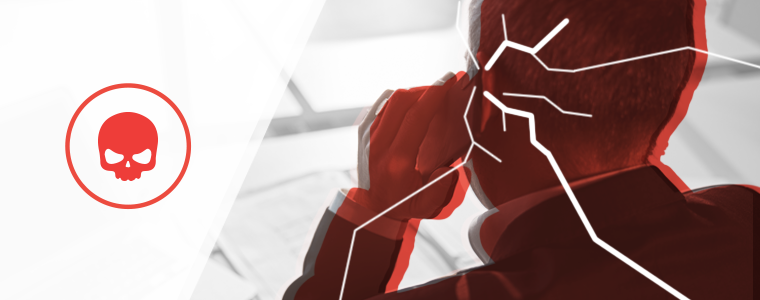Is Your Cybersecurity Really Covered? 7 Questions to Ask Your MSP
Your managed service provider (MSP) is responsible for keeping your organization’s technology up and running – especially during crucial times. From maintaining a healthy infrastructure to delivering frictionless service to your end users, your provider plays a critical role in your business strategy.
But what about your firm’s cybersecurity? Does your MSP really have it covered?
For example, many managed IT providers claim that client data is secure when it lives within their private cloud. This may be true, but what happens when that data leaves the private cloud? Is your office environment covered? What about your remote end users? Chances are, unless your MSP also provides cybersecurity services like cyber operations, incident response, and third-party risk management across your full organization (especially your end users), your assets and reputation could be at risk.
In fact, Agio has found that financial services firms who rely on both our Managed IT and Extended Detection & Response services are 80% less likely to have a vulnerability escalate to a breach.
So how can you be sure your data and your people are truly protected from the world’s most sophisticated attacks?
Ask your MSP these 7 questions
- Are our end users, data, and network protected outside of your private cloud? A cloud security policy alone doesn’t remove the risk of improper employee behaviors (e.g., installing software and downloading files that haven’t been approved by IT). That is, unless you have a detection & response monitoring service that offers a 360-degree view to analyze activities and usage, and determine risks introduced by end-users.
- Do you manage our asset inventory? Where does our critical and sensitive data reside? Your data is your competitive edge – you need to know who’s managing it and where it lives. It should be maintained to enhance performance, ensure availability, and remain protected from cyber-attacks.
- How do you remediate issues found in disaster recovery testing? Most likely, your MSP is conducting disaster recovery tests. But do they have the cyber operations tools to remediate if security issues are discovered? If not, do they project manage the remediation with an outside cybersecurity firm who does? To avoid missed gaps, we recommend a provider who pairs managed IT and cybersecurity under one roof.
- Do you follow cybersecurity best practices including multi-factor authentication (MFA) and principle of least privilege? Do you regularly perform updates of these practices? We often refer to these best practices as “Brilliance in the Basics,” but there’s nothing basic about them. Just one missed update or incorrect configuration can leave the door open for a bad actor to enter.
- Do you monitor the activity of our assets 24x7x365 and detect malicious, suspicious and anomalous behaviors? Agio’s engineers attest to the fact that it only takes seconds for attackers to enter a system, and the time it takes to steal what they need can be measured in hours. This means that when it comes to protecting your firm’s data (and its dollars), it’s imperative to implement a service that will monitor and mitigate threats in real time.
- Do you perform vulnerability scans of our assets outside of the cloud? Do you remediate discovered vulnerabilities through patch management? We know you already scan your servers in the cloud, but what about your assets that reside outside of the cloud? For example, network devices, end-user workstations, laptops, and phones also need scans to identify security gaps. Regular patching addresses any vulnerabilities that are detected.
- Do you have a plan for the unplanned? What happens if an end-user workstation is compromised? Would you have logs? Would you need to coordinate multiple vendors? To have a strong incident response plan, time is of the essence. It’s smart to work with an MSP that offers both IT and cybersecurity. Close coordination between the two eliminates clunky games of “telephone” between separate providers that can result in days rather than hours to mitigate a situation – costing time, money, and your reputation.

How Agio can help
When it comes to cyber-risk, a lot rests on the capabilities and expertise of your provider. If you’re not entirely sure whether your existing strategy is bulletproof, talk to us. Agio’s Open Extended Detection & Response (XDR) program wraps around your entire organization to protect your endpoints, end users, firewalls, email, network, public cloud, SaaS, and containers.
Whether you’re already working with an MSP and need to fill the gaps, or if you’re searching for a new provider, our industry-focused security analysts and AI-driven technology work in tandem to protect your infrastructure and end users – on any device, from anywhere.
Share post
Featured Posts
Connect with us.
Need a solution? Want to partner with us? Please complete the fields below to connect with a member of our team.




